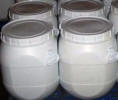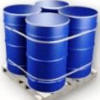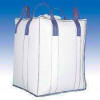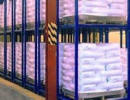| Anmol Chemicals is the pioneer manufacturers of Benzyl Alcohol, Pharmaceutical Excipients Fragrance Food & Flavor chemicals in India. We supply Halal and Kosher Benzyl Alcohol made in an ISO9001:2008, ISO22000:2005 (FSSC22000) cGMP and GLP certified facility. Our group has several manufacturing facilities spread across the world, supported by toll manufacturers and representatives in UAE, Europe, Africa, USA, China and has several associated manufacturing facilities spread across India. All the Information on Physics, Chemistry, Applications, Uses and Technology on Manufacture of Benzyl Alcohol is in these pages. |
| The units have one or more of the certifications like FDA GMP, ISO 9001, ISO 22000, HACCP, REACH, Kosher & Halal |





Benzyl Alcohol SDS MSDS Sheet of Manufacturers
Benzyl Alcohol Specifications of Manufacturers
Benzyl Alcohol SDS GHS MSDS Sheet, Material Safety Data Sheet
1. Product Identification
Synonyms: Benzenecarbinol; benzenemethanol; alpha-hydroxytoluene; Phenylmethyl alcohol; Phenyl carbinol
CAS No.: 100-51-6
EINECS EC-No.: 202-859-9
Molecular Weight: 108.14
Chemical Formula: C6H5CH2OH
Relevant Uses: Industrial use only.
Supplier: As per letterhead.
2. Hazards Identification
GHS, Globally Harmonized System Classification in accordance with 29 CFR 1910
Classification according to Regulation (EC) No 1272/2008
Acute toxicity, Oral Category 4
Acute toxicity, dermal Category 4
Skin corrosion/irritation Category 2
Acute toxicity, inhalation Category 4
Hazardous to the aquatic environment, acute hazard Category 2
Labeling according Regulation (EC) No 1272/2008
GHS Label Elements  Irritant |
Signal Words: Warning
Hazard statements:
H302: Harmful if swallowed.
H312: Harmful in contact with skin.
H315: Causes skin irritation.
H332: Harmful if inhaled.
H401: Toxic to aquatic life.
Precautionary statements:
P261: Avoid breathing dust/fume/gas/mist/vapors/spray.
P262: Do not get in eyes, on skin, or on clothing.
P264 Wash skin thoroughly after handling.
P270 Do not eat, drink or smoke when using this product.
P271: Use only outdoors or in a well-ventilated area.
P273 Avoid release to the environment.
P280: Wear protective gloves/protective clothing/eye protection/face protection.
P314: Get Medical advice/attention if you feel unwell.
P330: Rinse mouth.
P301+P312: IF SWALLOWED: Call a POISON CENTER or doctor/physician if you feel unwell.
P302+352: IF ON SKIN: Wash with soap and water.
P332+313: If skin irritation occurs: Get medical advice/attention.
P304+340: IF INHALED: Remove victim to fresh air and keep at rest in a position comfortable for breathing.
P305+ P351 + P338 IF IN EYES: Rinse cautiously with water for several minutes. Remove contact lenses, if present and easy to do. Continue rinsing.
P337+P313 If eye irritation persists: Get medical advice/ attention.
P330: Rinse mouth.
P360: Rinse immediately contaminated clothing and skin with plenty of water before removing clothes.
P362: Take off contaminated clothing and wash before reuse.
P501 Dispose of contents/ container to an approved waste disposal plant.
3. Composition/Information on Ingredients
Ingredient: Benzyl Alcohol
CAS No.: 100-51-6
EINECS EC-No.: 202-859-9
4. First Aid Measures
Always seek medical attention after first aid measures are provided.
Inhalation: If inhaled, remove to fresh air. If not breathing, give artificial respiration. If breathing is difficult, give oxygen. Get medical attention.
Ingestion: Give large amounts of water to drink. Never give anything by mouth to an unconscious person. Get medical attention.
Skin Contact: Immediately flush skin with plenty of water for at least 15 minutes. Remove contaminated clothing and shoes. Get medical attention. Wash clothing before reuse. Thoroughly clean shoes before reuse.
Eye Contact: Check for and remove any contact lenses. Immediately flush eyes with running water for at least 15 minutes, keeping eyelids open. Cold water may be used. Get medical attention.
5. Fire Fighting Measures
Fire: Flash point: 93C (199F)
Auto ignition temperature: 436C (817F). Combustible. High heat or direct flame is necessary to cause ignition.
Explosion: Above the flash point, explosive vapor-air mixtures may be formed.
Fire Extinguishing Media: Dry chemical, foam or carbon dioxide. Do not use a solid stream of water, since the stream will scatter and spread the fire. Water spray may be used to keep fire exposed containers cool.
Special Information: In the event of a fire, wear full protective clothing and NIOSH-approved self-contained breathing apparatus with full face piece operated in the pressure demand or other positive pressure mode.
6. Accidental Release Measures
Small Spill: Dilute with water and mop up, or absorb with an inert dry material and place in an appropriate waste disposal container. Finish cleaning by spreading water on the contaminated surface and dispose of according to local and regional authority requirements.
Large Spill: Benzyl Alcohol is Combustible material. Keep away from heat. Keep away from sources of ignition. Stop leak if without risk. Soak up with inert absorbent material and dispose of as hazardous waste. Keep in suitable, closed containers for disposal. Finish cleaning by spreading water on the contaminated surface and allow to evacuate through the sanitary system.
7. Handling and Storage
Protect against physical damage. Outside or detached storage is preferred. Inside storage should be in a standard flammable liquids storage room or cabinet. Separate from oxidizing materials. Storage and use areas should be No Smoking areas. Containers of Benzyl Alcohol may be hazardous when empty since they retain product residues (vapors, liquid); observe all warnings and precautions listed for the product.
8. Exposure Controls/Personal Protection
Airborne Exposure Limits: AIHA Workplace Environmental Exposure Level (WEEL):10 ppm, 8-hour, TWA
Ventilation System: A system of local and/or general exhaust is recommended to keep employee exposures as low as possible. Local exhaust ventilation is generally preferred because it can control the emissions of the contaminant at its source, preventing dispersion of it into the general work area. Please refer to the ACGIH document, Industrial Ventilation, A Manual of Recommended Practices, most recent edition, for details.
Personal Respirators (NIOSH Approved): For conditions of use where exposure to the substance is apparent and engineering controls are not feasible, consult an industrial hygienist. For emergencies, or instances where the exposure levels are not known, use a full-face piece positive-pressure, air-supplied respirator. WARNING: Air purifying respirators do not protect workers in oxygen-deficient atmospheres.
Skin Protection: Wear impervious protective clothing, including boots, gloves, lab coat, apron or coveralls, as appropriate, to prevent skin contact.
Eye Protection: Use chemical safety goggles and/or a full face shield where splashing is possible. Maintain eye wash fountain and quick-drench facilities in work area.
9. Physical and Chemical Properties
Appearance: Clear, colorless liquid.
Odor: Faint aromatic odor.
Solubility: 1g/25ml water @ 17C
Specific Gravity: 1.05 @ 20C/4C
pH: No information found.
% Volatile by volume @ 21C (70F): 100
Boiling Point: 205C (401F)
Melting Point: -15C (5F)
Vapor Density (Air=1): 3.72
Vapor Pressure (mm Hg): 0.15 @ 25C (77F)
10. Stability and Reactivity
Stability: Benzyl Alcohol is stable under ordinary conditions of use and storage. Undergoes slow oxidation in the presence of air or oxygen to form benzaldehyde and benzoic acid.
Hazardous Decomposition Products: Carbon dioxide and carbon monoxide may form when heated to decomposition.
Hazardous Polymerization: When heated past 100C, Benzyl Alcohol containing hydrogen bromide and dissolved iron may polymerize with a rapid increase in temperature.
Incompatibilities: Acids, oxidizing agents, and aluminum. Will attack some plastics.
Conditions to Avoid: Heat, flames, ignition sources and incompatibles.
11. Toxicological Information
Oral rat LD50: 1230 mg/kg
LD50 Oral - Rat - male - 1.620 mg/kg
Skin rabbit LD50: 2000 mg/kg; irritation, skin rabbit, standard Draize, 100 mg/24-hour, open, moderate.
Mutagenic Effects: Mutagenic for bacteria and/or yeast.
Teratogenic Effects: Not available.
Developmental Toxicity: Not available.
Carcinogenicity: No component of this product present at levels greater than or equal to 0.1% is identified as probable, possible or confirmed human carcinogen by IARC.
12. Ecological Information
Results of PBT and vPvB assessment: This substance/mixture contains no components considered to be either persistent, bioaccumulative and toxic (PBT), or very persistent and very bioaccumulative (vPvB) at levels of 0.1% or higher.
Toxicity to fish LC50 - Lepomis macrochirus (Bluegill): 10 mg/l - 96 h
LC50 - Pimephales promelas (fathead minnow): 460 mg/l - 96 h
Toxicity to daphnia and other aquatic invertebrates:
EC50 - Daphnia magna (Water flea) - 55 mg/l - 24 h
- Daphnia magna (Water flea) - 230 mg/l - 48 h
Environmental Toxicity: The LC50/96-hour values for fish are from 10 to over 100 mg/l. This material may be toxic to aquatic life.
13. Disposal Considerations
Whatever cannot be saved for recovery or recycling should be managed in an appropriate and approved waste disposal facility. Processing, use or contamination of this product may change the waste management options. State and local disposal regulations may differ from federal disposal regulations. Dispose of container and unused contents in accordance with federal, state and local requirements.
14. Transport Information
DOT: Not regulated.
IMDG: Not regulated.
IATA: Not regulated.
Canada TDG hazard class: Not regulated.
Europe ADR/RID hazard class: Not regulated.
15. Regulatory Information
USA:
SARA 311/312: Acute: Yes; Chronic: Yes; Fire: Yes; Pressure: No; Reactivity: No (Pure / Liquid)
SARA 302 Extremely Hazardous Substance: None present or none present in regulated quantities.
SARA 304 Emergency Release Notification: None present or none present in regulated quantities.
SARA 313 (TRI Reporting): None present or none present in regulated quantities.
Clean Water Act Section 311 Hazardous Substances (40 CFR 117.3): None present or none present in regulated quantities.
Clean Air Act (CAA) Section 112(r) Accidental Release Prevention (40 CFR 68.130): None present or none present in regulated quantities.
USA California Proposition 65: No ingredient regulated by CA Prop 65 present.
Canada WHMIS:
CLASS B-3: Combustible liquid with a flash point between 37.8°C (100°F) and 93.3°C (200°F). CLASS D-2B: Material causing other toxic effects (TOXIC).
16. Other Information
EINECS EC-No.: 202-859-9
H302 = Harmful if swallowed.
H312 = Harmful in contact with skin.
H315 = Causes skin irritation.
H332 = Harmful if inhaled.
H401 = Toxic to aquatic life.
Xn = Harmful
R20/22 = Harmful by inhalation and if swallowed.
DISCLAIMER: The information and recommendations set forth herein (hereinafter "Information") are presented in good faith and believed correct as of the date hereof. It is compiled from various sources and it is not necessarily all inclusive nor fully adequate in every circumstance. In addition, these suggestions should not be confused with nor followed in violation of applicable laws, regulations, rules or insurance requirements applicable. This MSDS sheet is intended only as a guide to the appropriate precautionary handling of the material by a properly trained person using this product. Individuals receiving the information must exercise their independent judgment in determining its appropriateness for a particular purpose.
Manufacturers
Anmol Chemicals
S-8, SARIFA MANSION, 2ND FLANK ROAD, CHINCHBUNDER, MUMBAI 400009, INDIA
TEL: (OFFICE) 91-22-23770100, 23726950, 23774610, 23723564. FAX: 91-22-23728264
e-mail: anmolc@mtnl.net.in

Copyright and Usual Disclaimer is Applicable. 27 January, 2022
Barter
They who love thee on this earth, keep calling on thee and chanting thy beads
Lest thou forgetest.
They assign the credit of their hard work to your blessings
They keep you amused.
They come to thy temple with baskets of fruits, as if you were a glutton
They deny the same to their children.
They offer you milk for a bath and burn the ghee
They hardly understand the meaning of it.
They bring gold and diamonds. They come with beating of drums
They love to advertise their offerings.
They offer you a small bribe as advance for booty, called lottery
They love to dream.
I do not bow down at your door
I do not bargain for booty
Your promise of the heaven does not lure me
Your hell-fire does not scare me
I do not even know the proper method of prayer
I do not offer any thing to you
Ages have gone by and I have not seen you my lord
Yet my love for you keeps waiting for you